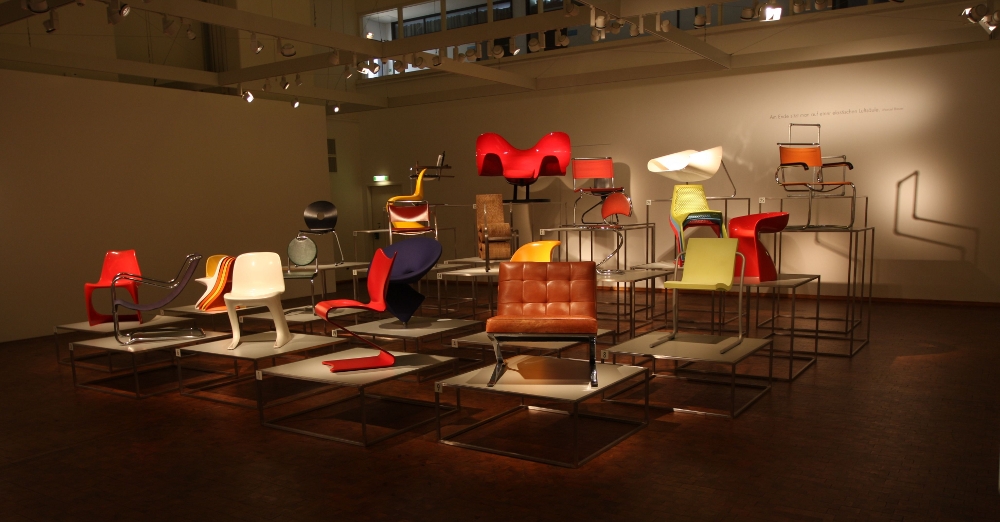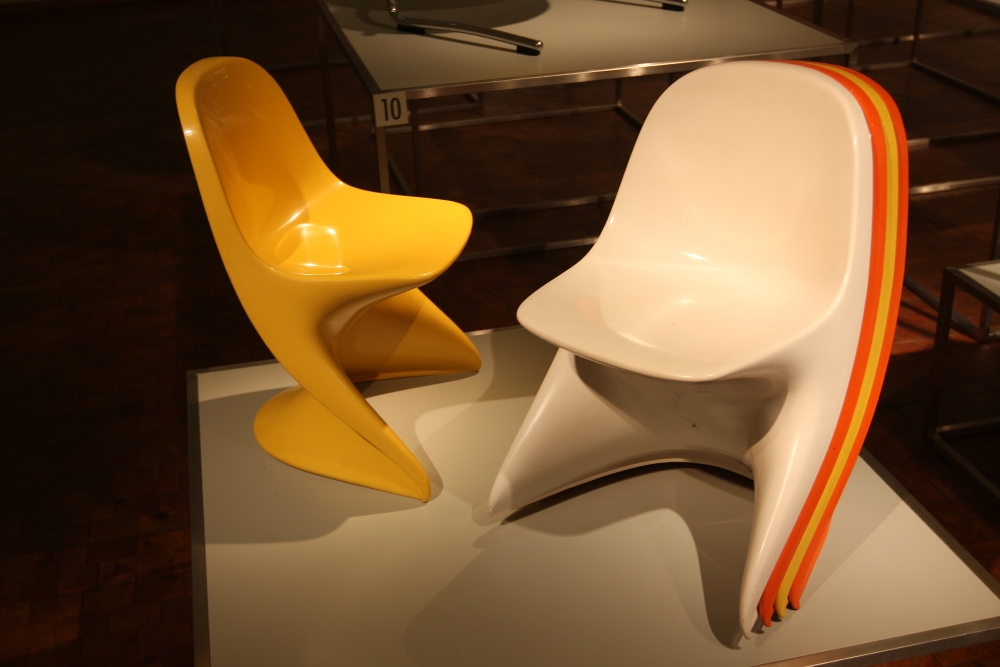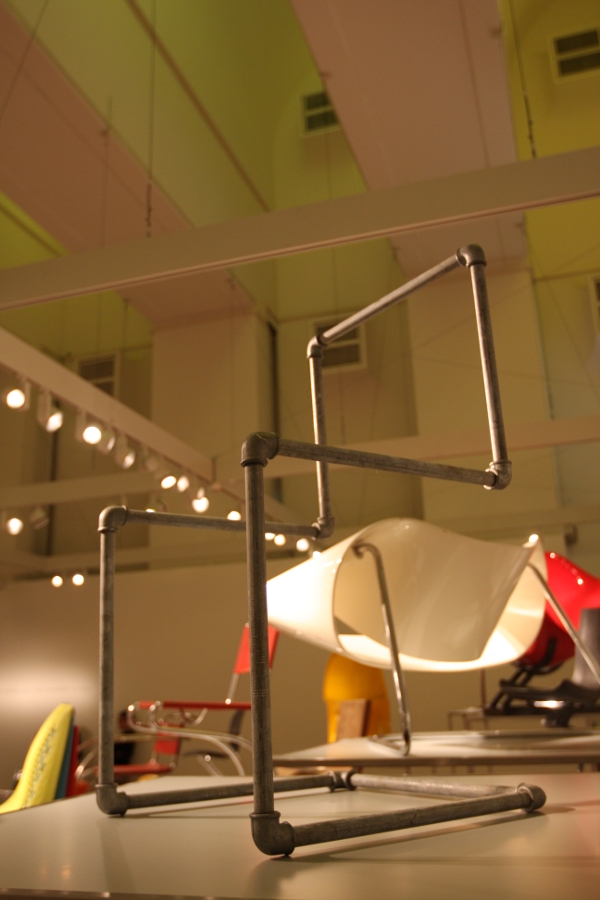On March 20th the Bauhaus Archiv Berlin opened their spring exhibition "Stühle ohne Beine - Chairs without legs"
Dedicated to the development and diversity of the cantilever chair, Stühle ohne Beine is a fairly simple exhibition concept with an equally simple message: designing a chair without legs doesn't mean limiting your possibilities. Less is more not being just a design maxim but also a design challenge.
Featuring 25 chairs from the collection of Die Neue Sammlung - The International Design Museum Munich, Stühle ohne Beine is not only the Bauhaus Archiv Berlin's first co-operation with Die Neue Sammlung but also, if we understood correctly, the inaugural exhibition in a new "As Guest at Bauhaus Archiv Berlin" series that will see various international museums invited to present a specially curated show in the German capital.
At the exhibition opening we spoke with Florian Hufnagl, Director of Die Neue Sammlung about the history, development and importance of the cantilever chair.
(smow)blog: Starting as it were at the beginning. There was, and is still, disagreement over who "discovered" the cantilever chair. Is the dispute still relevant or is the only relevant point that it was discovered?
Florian Hufnagl: I believe it is still important today because it was the first dispute over design to be dealt with by a court. And not only did they categorically decided in favour of Mart Stam, but also clearly defined Marcel Breuer's role. And such a definitive and clear resolution of such a dispute is still important for today's designers as, at least here in Europe, it brings them a degree of security.
(smow)blog: And for you was the decision the correct one?
Florian Hufnagl: Yes, yes the decision was conclusive and correct.
(smow)blog: The first cantilever chairs were very much a product of their era....
Florian Hufnagl: ... yes and that was the major change. The big incision. In the 20th century there were only three major breaks: once at the turn of the century with Josef Hoffmann, then, very generally speaking, the second half of the 1920s and again from 1968-70. These were the moments in design when one detached from what had come before and set off on new, brave, paths which in terms of cantilever chairs meant a few broken chairs and, literal, hard landings for some designers, but then "no risk no fun". And so it took a bit of time before developments moved on, but if you don't go to the limits you won't proceed.
(smow)blog: And so specifically with the cantilever chair, can one identify a moment when it became a successful mass market concept?
Florian Hufnagl: As with many objects from Bauhaus era the popularity really took off after the second world war, and especially during the 1960s.
(smow)blog: In that context there are a couple of plastic cantilever chairs from the DDR in the exhibition. Was the development of the plastic cantilever chair timeous for the DDR. So cheap, mass producible....?
Florian Hufnagl: There is a whole series of DDR cantilever designs and the aim was always cheap production, which of course was no different to the situation in West Germany, or for example Italy.We shouldn't forget that firms such as Kartell were more or less forced to turned to plastics. And so it wasn't just in the DDR that there was an ideological background to the decisions to produce value for money, bright, furniture for the modern youth. The DDR designs however always suffered in that the the shortage of raw materials was a ubiquitous problem and so whereas many products were conceived in the DDR only very few reached the public. Many products were produced instead in the West or in Russia.
(smow)blog: The original cantilever chairs were very much of their day in terms of materials. In how far do you think the cantilever chair offers designers today a platform with which they can experiment?
Florian Hufnagl: I think MYTO by Konstantin Grcic, created as it was in cooperation with BASF, a global concern who worked in a very focused manner in cooperation with a designer to take the development of a new material even further, that for me that is an excellent example of what is possible because today it's a question of new materials. We need new materials not just in the context of producing certain products but in terms of solving the problem of sustainability because the products we produce must also be responsibly produced.
(smow)blog: In your opening address you said, in effect, that the chair has already been invented, but that wont stop producers presenting a few thousand "new" ones in Milan. As a museum director, director of a collection, what makes you stop in your tracks and take notice of something ?
Florian Hufnagl: For me the initial connection is always emotional. The same as with any other person observing the world around them. The emotional reaction can be because it is new, is different, does something that was until now unknown. And such objects are the overwhelming exceptions. Maybe half a chair from every 100.
(smow)blog: Which means you always travel to Milan with high hopes but return with an empty suitcase?
Florian Hufnagl: Yes, that happens often, although there are also occasional surprises. Which is all completely normal because the consumer world is getting bigger, the need for consumer goods is shrinking and real invention is rare. But that was also the case in the 20th century, it was the case in the 19th century and that's why we have museums who pick out the best parts and so try to give us an orientation.
Stühle ohne Beine can be viewed at the Bauhaus Archiv Berlin until June 10th 2012.


